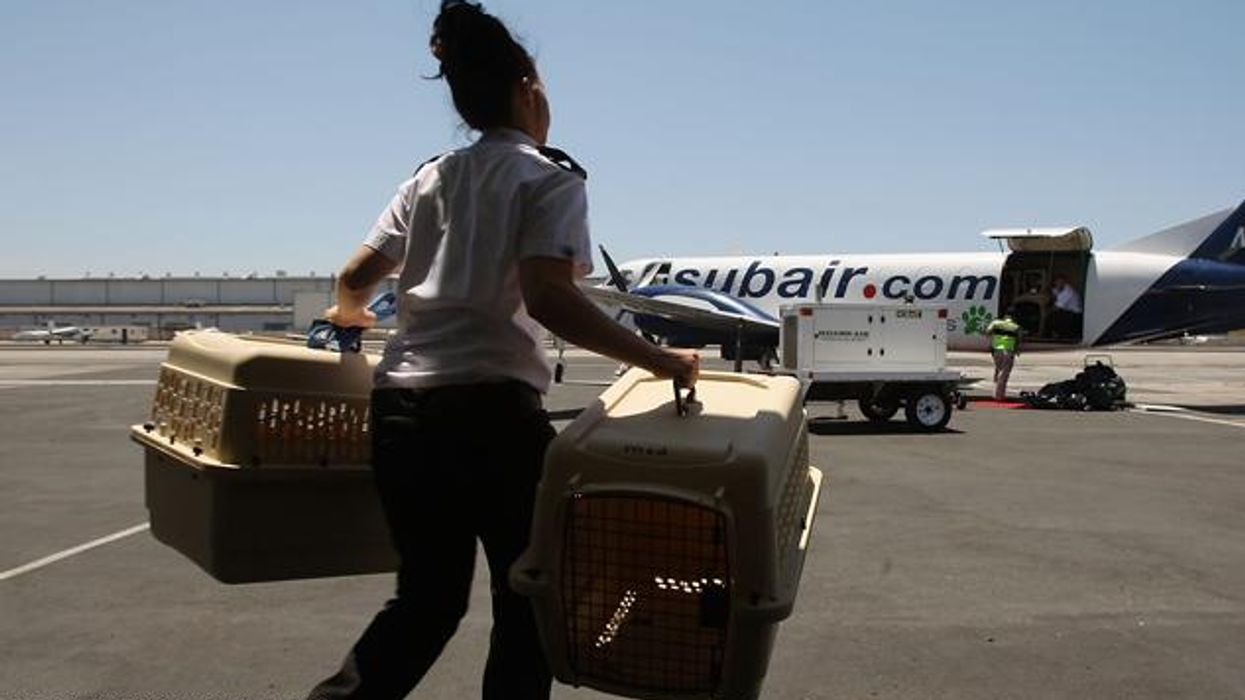
Cesar Millan, Mary Wyld and Julia Pennington Advise on Safe Summer Travels with Your Pet
June 01 2015 11:22 AM EST
By continuing to use our site, you agree to our Privacy Policy and Terms of Use.

Cesar Millan, Mary Wyld and Julia Pennington Advise on Safe Summer Travels with Your Pet
In a 2014 survey, GoPetFriendly.com reported that more than half of pet owners “always” take their pets with them when they travel with an additional 44% acknowledging they “sometimes” bring their pets along. Turns out most of that traveling is by car (78%) rather than by air (1.5%). So whether you’re planning to take RuPaw to Reno or Ariana Ruffington to Washington, we’ve asked a few experts to chime in on the best ways to keep your critters safe and your holiday sane.
That same survey also revealed that more than 90% of our furry (or feathered or scaled or finned) travel partners were dogs. For safe travel with our canine companions, Cesar Millan, world-renowned dog behaviorist and star of "Cesar 911" on Nat Geo Wild recommends:
"Make sure your dog gets plenty of exercise before the trip. This will reduce their excess energy and keep them calm while traveling.
It’s always a good idea to crate your dog when traveling in the car to prevent injury to your dog or yourself and passengers.
Don’t feed your dog before traveling in any kind of vehicle. They can be prone to motion sickness and a full stomach can make it worse.
When traveling by air, contact the airline ahead of time to make sure you have everything you need before you get to the airport. Some carriers require a health certificate before they’ll let a dog on the plane.
If your dog has to travel in cargo, don’t make a big deal of saying good-bye. This will just make your dog anxious and over-excited. She won’t resent it if you say nothing.
If you’ll be staying in a hotel with your dog, plan ahead and find one that’s pet-friendly. If you’re going to be away from the hotel without your dog, make sure that they have doggy day care onsite or that there’s a boarding facility close by.
If you’re traveling abroad, check the laws long before you leave. Some places don’t allow foreign dogs at all, while others have lengthy quarantine processes.
If your dog does get carsick, you can reduce it by making the car a fun place. Start by sitting in it with the engine off, with your dog and treats or their favorite toy. Once they’ve started to associate the car with good things, you can start with short trips and gradually work your way up.
Before traveling away from home, update your dog’s I.D. If it only has your home number, consider getting a travel I.D. with your cell phone and a local number if you have friends or family in the area.
When you’re at your destination, try to keep your schedule as similar as possible to what it was at home, walking and feeding your dog at the same times of day. This will help her adjust to the change in scenery."
Julia Pennington, one of the founders of Los Angeles's all-volunteer, non-profit A Dog’s Life Rescue (they rescue plenty of cats too) had this to say about traveling with your favorite feline:
“Honestly it can be quite hard for most cats to travel since they tend to very much like what is familiar. However, for those who do travel well or for situations requiring that the kitty must travel I would say go car over plane if possible, but if air travel is necessary, then always in the cabin. Please never put an animal in cargo. It is just too risky: they are not supervised if anything goes wrong.
When traveling by car:
Make sure cat is in a secure carrier and never left in the car unattended (heat, theft, etc.).
If traveling a long distance then we recommend getting a larger crate so that you can set up a litterbox and resting area all in the same crate. That crate can then be carried inside when lodging overnight.
Your cat should be microchipped, but if she hasn’t been yet, definitely do so before getting on the road and make sure all info on the chip is current.
For extra safety, the cat should also have a breakaway collar and ID tag on if he will wear one."
A 2012 American Veterinary Medicine Association report notes that there are 8.3 million pet birds in the U.S. which means plenty of our feathered friends may need to come along for the ride when we travel. Mary Wyld, owner of Wyld Wingdom, one of the nation’s largest wholesale pet bird supply distributors advises it’s important to plan ahead and take a number of factors into consideration when traveling with a pet bird.
o A properly sized pet-safe travel carrier is essential. It should have a low mounted sturdy perch and be large enough to allow your bird to turn around.
o Desirable bird treats and a dripless water bottle.
o A stand or perch that can attach to the carrier is helpful for use while indoors.
o An assortment of pet bird toys that are familiar to the feathered friend.
o When traveling, the toy must not swing with the motion of the vehicle. It could injure the bird during transit.
o Fresh water, food and snacks for your bird – Keep fresh fruits and veggies in a cooler with cold packs to help prevent spoiling.
o Pet bird harness
o Towel or Cage cover
o Cleaning supplies such as wipes, spot removers, and paper towels (when flying don’t forget about the 3 oz. rule for liquids)
o Styptic powder and first aid kit in case of broken nails, beaks or feathers"